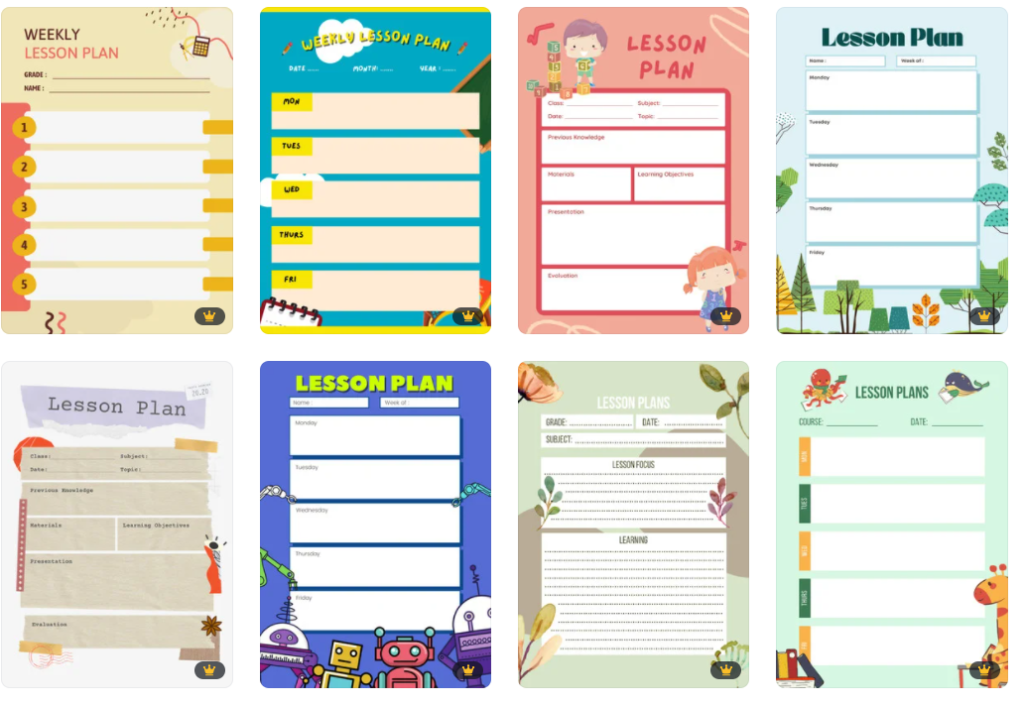Lesson Planning.
The Importance of lesson Plans
A lesson plan is a tool that teachers use every day to establish what students will learn, how the lesson will be delivered, and how learning will be assessed. Lesson plans give teachers a clear structure to follow throughout each lesson, allowing them to be more effective in the classroom.
It allows teachers to debate over their lesson goals, the types of activities that will fulfill those aims, the order of those activities, the supplies required, the length of each exercise, and how students should be organized.
What should a good lesson plan include?
It should include the information and actions that must be completed within a certain amount of time. Teachers should be have a step-by-step road map to help them delve deeper into what they’re teaching. This should tell you how the instruction should proceed within the lesson’s framework.
The second thing to consider is whether or not the students are grasping what you’re teaching.
A lesson plan helps teachers in more ways than you may think. In addition to planning for factors that are critical for good in class learning, they can also help in the following.
A Twinkl resource:
Preparing for the 3 key areas of learning.
A coherent teaching structure should be followed by the teacher because it is critical to cover the three primary areas of teaching.
1 A lesson plan reveals the course’s primary goals, students should leave class with a full understanding of the topic covered.
2. The course’s main goals are followed
3. Teaching and learning goals are met and an assessment method is incorporated.
And even more, It helps;
Builds Students Confidence in Teachers.
Becoming a more confident teacher once you have an updated lesson plan in your hands. It will help you to be up to date on the most recent teaching techniques.
You will not be seen as adhering to the old school of thought, but will instead be seen as using fresh teaching methods. A lesson plan will assist you in adhering to the most successful teaching approaches.
Your reputation as a confident, well-informed, and knowledgeable teacher who introduces new and better teaching skills to the classroom will be enhanced.
Help students by neither repeating nor forgetting lessons.
Frequently teachers neglect or repeat subjects already taught. The lack of a lesson planning has resulted in this problem.
You’ll be able to avoid accidental omissions or repeats if you have a lesson plan. This will prevent your students from being advanced from one grade to the next with insufficient skills.
Helps with possible changes.
There are some points that can be checked and updated while preparing the lesson plan. It enables teachers to employ various tactics, methods, and technologies in order to make the teaching process more engaging and fun.
Lesson plans assist teachers prevent mistakes by clarifying what they are teaching and preparing for any questions that may arise.

Prior planning prevents text book Fatigue
There are numerous fantastic guidelines with decent resources that allow a teacher to build a successful lesson plan utilizing the syllabus. These manuals often include solved problems and notes, allowing teachers to save time.
As a result, they will have more time to concentrate and learn. As a result, a strong lesson plan keeps students from relying too heavily on textbooks.
Promotes purpose driven content.
You can design your lessons more purposefully using a lesson plan as a teaching tool. A methodical teaching pattern is the foundation of good classroom management.
You will be able to offer the subject matter straight and clean if you have a well-mapped out plan of learning activities and routines.
So in brief a lesson plan serves as a quick reference tool for all teachers. Teachers who are willing to present the material in a way that is both logical and well-informed.
So, let go and prepare our lesson plan. below are 5 steps to help you prepare your own lesson plan. And rather than using a generic lesson plan that does not reflect your personality.
I strongly advise to take the time and write your own.
You can always change your own material and make it relevant for different grades. This will save you time in planning and angst in the classroom. Let’s go….

5 steps for preparing your lesson plan.
1. What are the learning objectives.
The first thing is to find out what you want your pupils need to know and be able to do by the conclusion of class. Ask the following questions to help you define your student learning goals:
- What is the lesson’s subject?
- What do I want students to take away from this experience?
- At the end of class, what do I want them to know and be able to do?
- What do I want students to remember about this lesson in particular?
After you’ve written down the learning objectives for the class meeting, prioritize them. In the event that you are pressured for time, this phase will prepare you for managing class time and completing the most critical learning objectives.
2. Plan the specific learning activities
Create several alternative ways to explain the information to capture your students’ attention and appeal to various learning styles. Predict how much time you’ll spend on each of your examples and activities as you set them out.
Allow time for detailed explanations or discussions, but also be prepared to move rapidly to new applications or challenges, as well as to establish ways for ensuring understanding. These questions will assist you in creating the learning activities you’ll use:
3. Plan to test student understanding.
Consider asking specific questions you can ask students to check for understanding, write them down, and then paraphrase them so you may ask the questions in a variety of ways.
Try to foresee what kinds of responses your inquiries may provoke. Determine whether pupils should respond verbally or written.
4. Create a lesson time frame.
Estimate how much time each activity will take, then leave some extra time for each. When making your lesson plan, write how much time you estimate each activity to take next to it.
Plan to spend a few minutes at the end of class answering any outstanding questions and summarizing important concepts.
If you have time left over, plan an extra activity or a discussion question.
Be adaptable – rather than adhering to your initial plan, be willing to change your lesson plan to meet the needs of your students and focus on what appears to be more fruitful.
5. What am I going to do to explain the subject and get the students interested?
Some of the techniques and tools you can use are:
Interaction with the material
If students are asked to interact with the material in some way, they are more likely to remember the information offered in these methods.
Digital content
Students practice making decisions in virtual environments, visualizing the effects and or repercussions. i have more information on this ==> HERE <==
Collaboration with others
Peer relationships, informal support structures, and interactions and relationships between teachers and students.
Critical thinking and problem solving
Students are given a problem, setting, example, challenge, or creative issue to confront or deal with, and they are then required to think about or apply their knowledge and information in new and innovative ways.

Age and level Relevance.
Perhaps the one most overlooked in the classroom. You should have lesson plans for students of all ages and skill levels. Your lesson plan should cover these levels at least.
1) Kindergarten, quick and rapid with lots of variations to keep kids interested at the most basic level.
2) Children, lots of games and fun activities, yet some rigorous book-based learning. It is not necessary for it to be as fast-paced as kindergarten
3) Adolescents. (Secondary school) I like to perform one activity at the beginning and one at the end of the lesson. There will be a greater emphasis on book study.
4) Adults are the fourth group. With the comments, you can be a little more daring. More emphasis on acquiring and mastering all abilities.
You can check out more ==> HERE <== ESL lesson plans for beginners.
Conclusion.
Great lesson plans will help you in so many ways. It is vital that you get your head around creating a good lesson plan. If you can do this, your teaching life will be a lot easier. Canva also has some great resources for lesson planning.

And who am I. My name is Stephen and I have been teaching in Vietnam for 15 years and own 2 schools. I love traveling and meeting new people and experiencing different cultures. You can check out my house in Vietnam below on YouTube.
Any or all links on this site maybe affiliate links, and if you purchase something through those links I will make a small commission on them.
There will be no extra cost to you and at times due to my affiliation you could actually save money.
You can read our full affiliate disclosure here.


